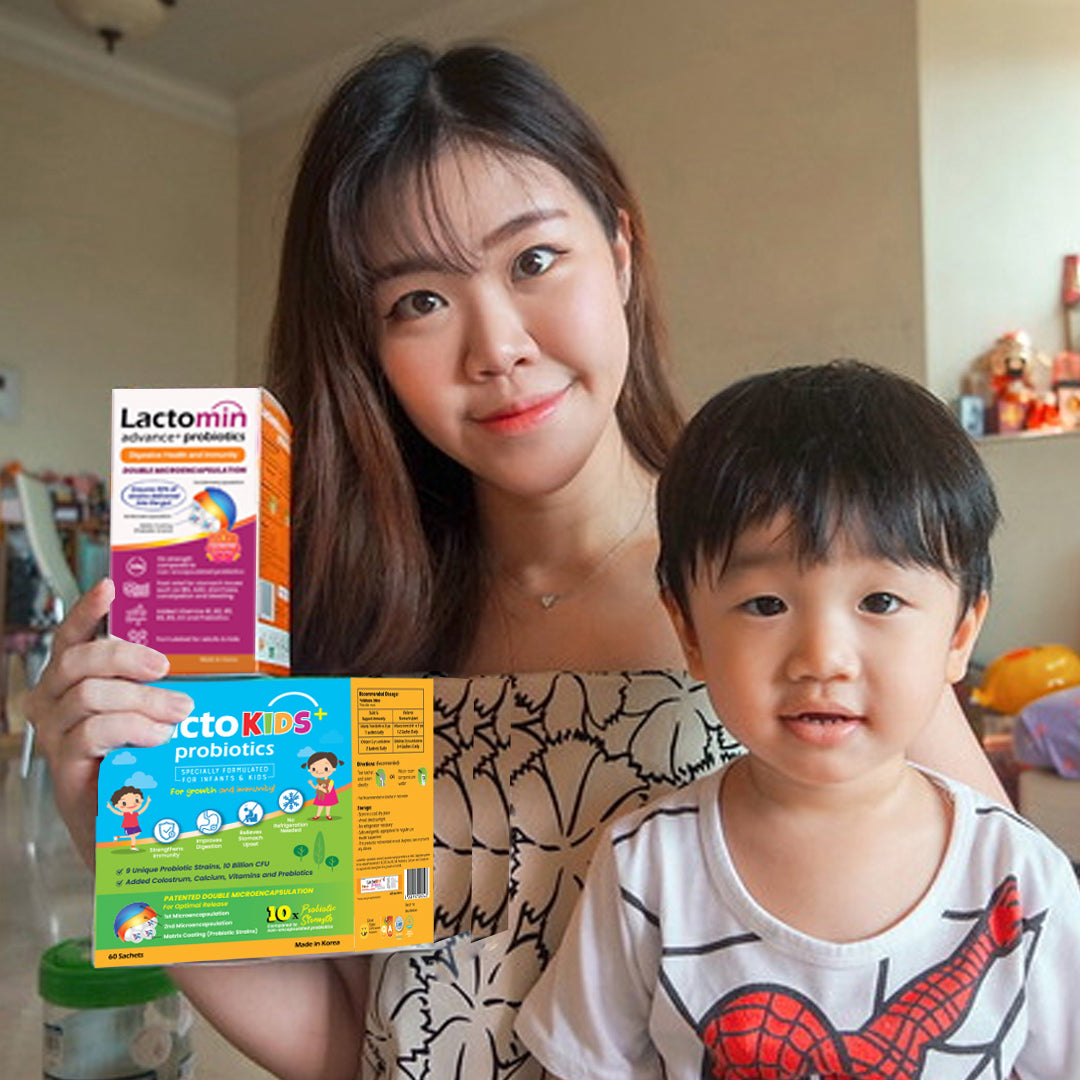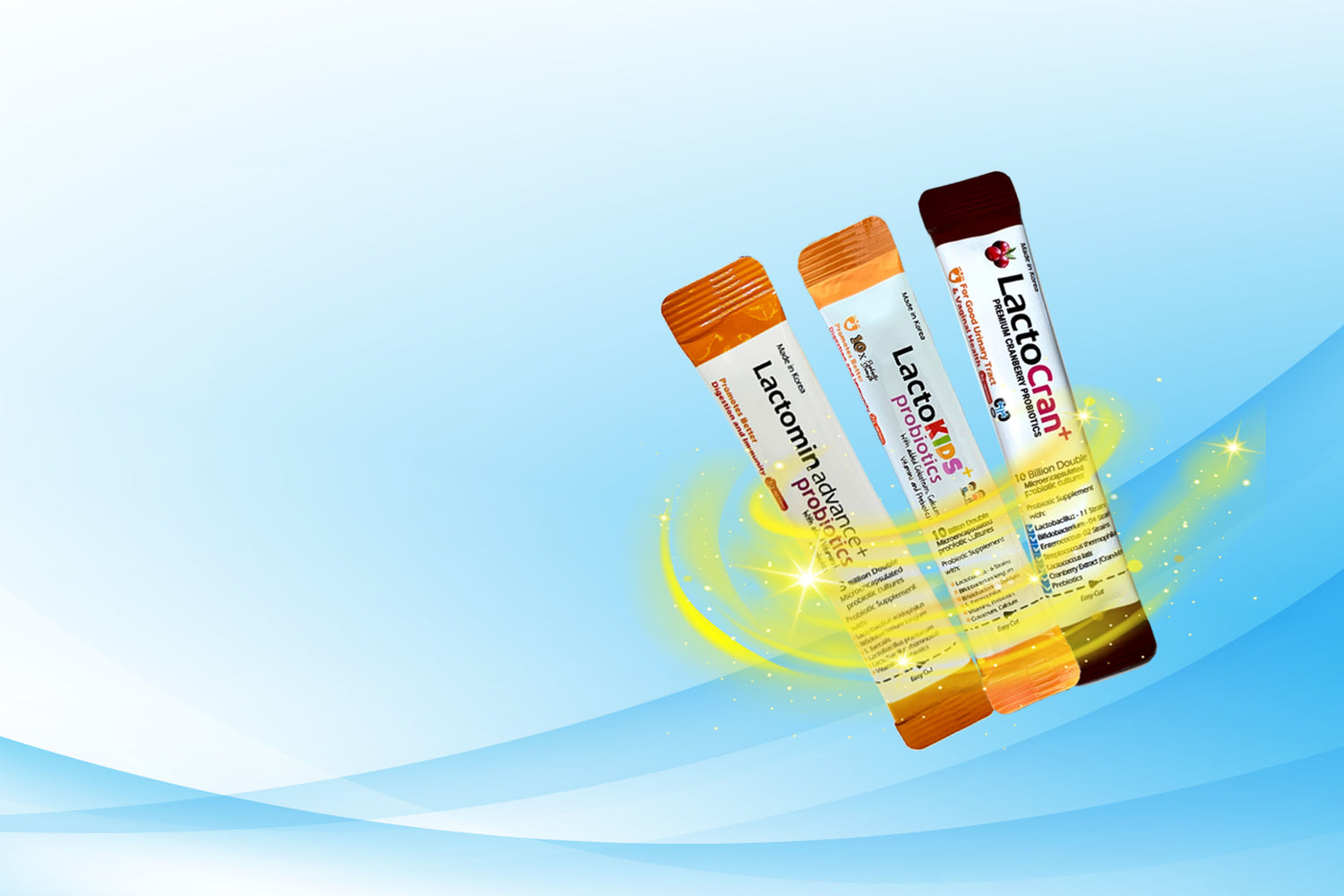Why taking care of your child's digestive system matters?

When it comes to supplementation there is one exception: Lactobacillus and Bifidobacterium probiotics. Mounting research shows supplementing from birth with probiotics can play a major role in developing a strong digestive system, maintaining a strong immune system and overall good health.
To choose the right probiotic for your child, look for multi-strain brands that contain Bifidobacterium and Lactobacillus for kids, the more the better.
Lactokids + Probiotics has 9 probiotics strains, and is specifically formulated for babies, toddlers right up to primary schoolers. A complete combination of multi Lactobacillus, Bifidobacterium strains, vitamins, colostrum and calcium. If you have not tried, do try it at participating Guardian or Watsons Pharmacies today!
Do you understand the whole process of how food is broken down in your child's stomach?
When you do eat, the saliva breaks down the chemicals in the food a bit, which helps make the food mushy and easy to swallow. Your tongue helps out, pushing the food around while you chew with your teeth. When you're ready to swallow, the tongue pushes a tiny bit of mushed-up food toward the back of your throat and into the opening of your esophagus, the second part of the digestive tract.
The esophagus is like a stretchy pipe that's about 10 inches (25 centimeters) long. It moves food from the back of your throat to your stomach. Your stomach, which is attached to the end of the esophagus, is a stretchy sack shaped like the letter J. It has three important jobs: to store the food you've eaten to break down the food into a liquidy mixture to slowly empty that liquidy mixture into the small intestine The stomach is like a mixer, churning and mashing together all the small balls of food that came down the esophagus into smaller and smaller pieces.
It does this with help from the strong muscles in the walls of the stomach and gastric juices that also come from the stomach's walls. In addition to breaking down food, gastric juices also help kill bacteria that might be in the eaten food. Onward to the small intestine! 22 Feet Isn't Small at All The small intestine is a long tube that's about 1½ inches to 2 inches (about 3.5 to 5 centimeters) around, and it's packed inside you beneath your stomach. If you stretched out an adult's small intestine, it would be about 22 feet long (6.7 meters) — that's like 22 notebooks lined up end to end, all in a row!
The small intestine breaks down the food mixture even more so your body can absorb all the vitamins, minerals, proteins, carbohydrates, and fats. The grilled chicken on your pizza is full of proteins — and a little fat — and the small intestine can help extract them with a little help from three friends: the pancreas, liver, and gallbladder. Those organs send different juices to the first part of the small intestine.
These juices help to digest food and allow the body to absorb nutrients. The pancreas makes juices that help the body digest fats and protein. A juice from the liver called bile helps to absorb fats into the bloodstream. And the gallbladder serves as a warehouse for bile, storing it until the body needs it. Your food may spend as long as 4 hours in the small intestine and will become a very thin, watery mixture.
It's time well spent because, at the end of the journey, the nutrients from your pizza, orange, and milk can pass from the intestine into the blood. Once in the blood, your body is closer to benefiting from the complex carbohydrates in the pizza crust, the vitamin C in your orange, the protein in the chicken, and the calcium in your milk. Next stop for these nutrients: the liver! And the leftover waste — parts of the food that your body can't use — goes on to the large intestine. We will discover the function of the large intestine in our next segment

